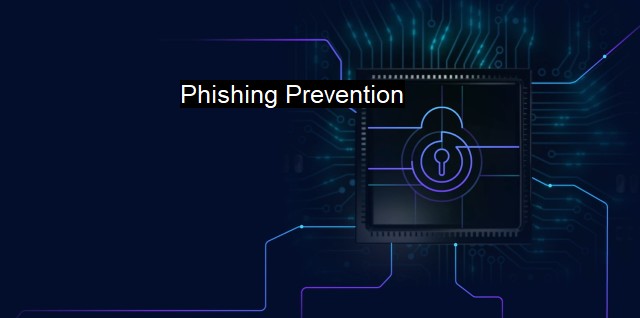What is Phishing Prevention?
Staying Ahead of the Game: The Importance of Phishing Prevention in Today's Cybersecurity Landscape
Phishing prevention is a series of measures adopted for fortifying Internet safety against phishing scams. This strategy evolved as an indispensable area of concern within cybersecurity and antivirus due to the proliferation of digital crime strategies such as phishing. Phishing is a method employed by cybercriminals to steal sensitive data by posing as trustworthy entities via digital correspondence such as emails or websites. To understand the pressing requirement for phishing prevention measures, it is crucial first to know falling prey to such attacks can lead to grave disasters like unauthorized access to users' personal information, monetary loss, and irreparable damage to one's cyber identity.Phishing prevention enables a user or a system to deflect phishing attempts effectively. This aspiration is achievable through a mix of technology, user education, and policies. Cybersecurity and antivirus software work hand-in-hand to ensure phishing prevention. These not only detect and prevent dangerous software but also bar the users from subscribing to unsecure connections wherein phishing could occur. The multiple faces of the preventive software use curated databases of spam senders, dangerous URLs picked up from previous encounters worldwide, thereby acting as stalwarts in blocking phishing.
Further, they also use machine learning for predicting hazardous patterns even before they strike. Much of phishing is based on manipulation with content and form that imitates trustworthy communication channels, which is why the advancements in the domain of anti-phishing, through artificial intelligence, capitalize on identifying such demonic pattern amidst myriad data points.
Antivirus applications can train and condition the users to recognize and report phishing attempts by causing friendly sparks right when they deviate. The report logs from users worldwide make the prediction and detection engines of these software applications even sharper in weeding out the peril.
Phishing emails often imitate reliable financial institutions, service providers, or reputed organizations and bait users into clicking malicious links, subsequently leading to unauthorized data mining. Hence, educating users and promoting phishing awareness is a crucial part of phishing prevention. It's advised that users receive necessary training to identify phishing tactics, such as unsolicited email requests, suspicious hyperlinks, or an uncharacteristic lack of personalization.
By building professional instincts to question all kinds of digital communication that demand user's sensitive data, organizations can elsewhere manifest phishing prevention. An essential pillar of the phishing prevention strategy comes out as experiential and insightful security awareness training. By replaying workplace versions of phishing scams as training exercises, users internalize the real-time combative moves.
Adopting solid cybersecurity policies is another proactive measure for phishing prevention. Setting up firewalls, using complex passwords, and enabling two-factor authentication can protect a system from allowing unwanted access. Regular system updates ensure that software runs with the latest security patches for tackling evolving phishing strategies.
Implementing email security best practices can also add an extra layer of defense. For instance, organizations enforce email security protocols focusing on better spam filters, email encryption, and server authentication that systematically derails typical ammunition of phishers.
Phishing takes advantage of human error in most cases, and by focusing equally on technology and educating people about these evolving tactics, phishing prevention can significantly contribute to secure digital realms. by amalgamating technological interventions with an emphasis on increasing user mindfulness and leveraging robust policies, phishing prevention presents a three-fold strategy to combat the sinister reading's threats and consequently bulwarks digital trust everyone yearns for.

Phishing Prevention FAQs
What is phishing prevention?
Phishing prevention is the set of measures and techniques used to identify, prevent, and respond to phishing attacks. It involves raising awareness among individuals about how to recognize and avoid phishing scams and implementing technical controls to block phishing emails and websites.What are some common phishing techniques?
Some common phishing techniques include email phishing, spear phishing, social media phishing, and smishing (SMS phishing). Phishing emails typically contain a fraudulent link or attachment that installs malware or fraudulently obtains sensitive information such as login credentials, financial data, or personal information.What are some phishing prevention best practices?
Some phishing prevention best practices include educating users about how to recognize phishing emails, regularly updating anti-virus and anti-malware software, configuring spam filters to block suspicious emails, using multi-factor authentication for login credentials, and implementing security awareness training programs for employees.What should I do if I suspect a phishing attack?
If you suspect a phishing attack, do not click any links or download attachments from the suspicious email. Report the email to your IT department or security team and delete the message. If you have already clicked a suspicious link or provided login credentials or other sensitive information, immediately change your password and notify your IT department or security team.| | A | | | B | | | C | | | D | | | E | | | F | | | G | | | H | | | I | | | J | | | K | | | L | | | M | |
| | N | | | O | | | P | | | Q | | | R | | | S | | | T | | | U | | | V | | | W | | | X | | | Y | | | Z | |
| | 1 | | | 2 | | | 3 | | | 4 | | | 7 | | | 8 | | |||||||